This last is called a lure.
In the bush you will find many plants whose leaves when crushed have a strong perfume. If you crush these in your hands before, during, and after you have made your trap, you will leave the scent of the leaves on the trap, and this will be so much stronger than your man scent that it will drown the latter. Of course your scent will remain all round the area, and the animal will be suspicious.
FIRE REMOVES SCENT
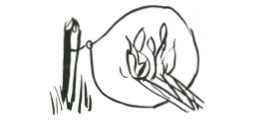
Fire is a good destroyer of man scent, and if you scorch the trap or snare by making; a torch of dry grass or dead leaves, you will cleanse it to the animal’s nose, and he will be less suspicious.
LURES
The use of a lure is undoubtedly the most effective way to kill man scent.
Urine of the species of animal you want to trap is an excellent scent killer, and urine of a female of the species taken when she is ‘on heat’ or ‘in season’ is an infallible lure for males of that species. The urine should be taken from the bladder of a newly killed female, and bottled for future use.
Another fairly good lure is oil of aniseed, or oil of rhodiun. A very light touch of one of these lures on the bait is all that is required.
Salt is also a very effective lure in areas away from the coast, but salt is not in itself a scent killer.
Noise lures are often highly effective. These may take the form of special whistles, or may be in the form of squeaking or friction instruments. Noise lures are not commonly used in conjunction with traps or snares.
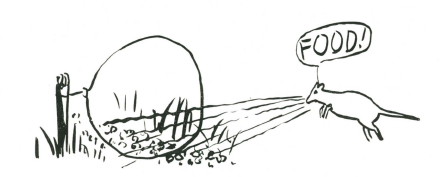
Food lures are always highly effective; small particles of food are scattered lightly around the area of the traps or snares, and the animal, scenting this food, finds it plentiful in the area, and scavenges round looking for more till finally he finds the bait in the trap, and is caught.
Obviously some of the man scent will be on the food lure particles, and, although the animal may be suspicious at first, finding that no harm comes to him, his suspicions will decrease.
An excellent use for food lure particles is to scatter them thinly along an animal trail, and then fairly thickly on either side of a simple noose snare.
BAITS
In the section of this book dealing with animal tracks you saw that there were broadly four different divisions of animal feeding pattern. These were:
Tree feeding animals,
Earth digging and feeding animals,
Flesh eating animals,
Grazing animals.
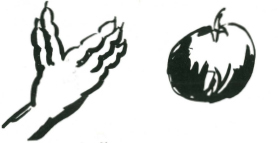
Baits for tree feeding animals must be fruits,

Baits for earth digging animals must be roots, or insects,
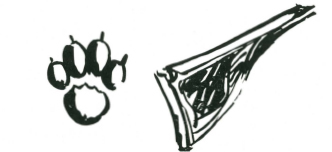
Baits for flesh eaters must be flesh,

Baits for grazing animals must be herbage.
TEST BAITING
Test baiting an area will show what animals are in the locality, and what baits they will take. To test bait an area select a site which is on light dusty clean soil that will clearly show all tracks. The area should be three or four yards square.
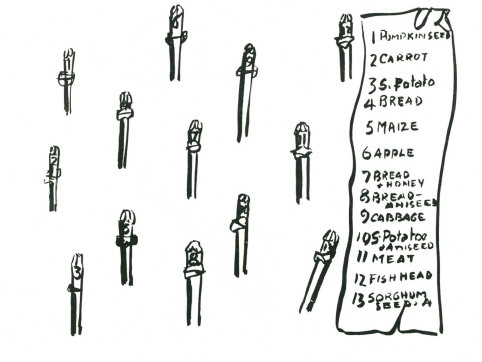
Drive ten or a dozen short stakes, each about a foot long, into the ground. There should be at least three feet between each stake. Tie different baits, some with lures and some without to the stakes. Make a sketch map of the position of the stakes and notes of the bait each carried.
This work should be done in the afternoon. The following morning you must visit the area, and on the soft dust you will see the tracks of all the creatures which visited the area during the night, and what baits they took.
You will see bird tracks at the seeds, and tied up worm (if you put one there). You will see the tracks of tree climbing animals around the stakes where you had a piece of apple, and you will see the digging claw tracks of earth bur-rowers around a piece of sweet potato or a carrot, while a pumpkin seed will have attracted both a bush rat and a bird.
You will notice, too, that some baits, possibly those with lures, have been untouched, while others have been taken.
This work of test baiting is an essential preliminary to successful trapping. Salt is a good addition to all baits.
Suggested test baits for Australian conditions are as follow:
Roots:
Flesh:
Sweet potato
Meat
Carrot
Fish head
Parsnip
Worm
Dandelion root
Cheese.
Yam or other ground tuber. Fruits:
Seeds and Grains:
Apple
Pumpkin seed
Banana
Melon seed
Fig and local fruit baits
Corn
Herbage:
Wheat
Cabbage leaf
Sorghum seed
Lettuce leaf
Peanut
Celery stalk
Nut.
Carrot top.
These should be used both with and without lures.
DEVELOPMENT OF SENSE ORGANS INDICATES DEGREE OF SENSITIVITY
In a general way high development of sense organs indicates degree of sense dependence of the animal.
For example, animals which have large ears have acute hearing, and animals with pronounced nasal development have a sharp alertness to scent.
Sense organ development is not a mere matter of size of the organ.

A human eye, or an eagle’s eye, are not as large as a dog’s but the development of both the human eye and the eagle’s eye far exceed the development of the dog’s, they both have a far greater range of adaptability to varying conditions of light, and, something the dog’s eye lacks, they are both sensitive to colour.
In the act of seeing there is first a rapid scanning of the area with the eyes. In this scanning, something, it may be movement or any departure from the normal pattern, cries ‘stop’ to the eyes. This is ‘selection,’ the second part of seeing. Having selected an object for attention, the third stage, ‘recognition,’ commences, and only when this is completed do we ‘perceive’ or ‘see.
The eye does this continually, and is adapted for ‘seeing’ under a wide range of light conditions. It also has the ability to see colour and can discern and perceive over a wide range of distances.
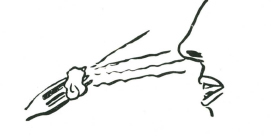
In contrast to the human eye with its high state of development, compare the human nose. Its development is so poor that it is of little use as an aid to living. If the meat on your fork is bad your nose might possibly detect the odour, or if cloth is burning you might smell it, but when you consider the scent sensitivity of a deer or a dog which can smell you half a mile downwind, it is apparent that the human nose tells its owner literally nothing.